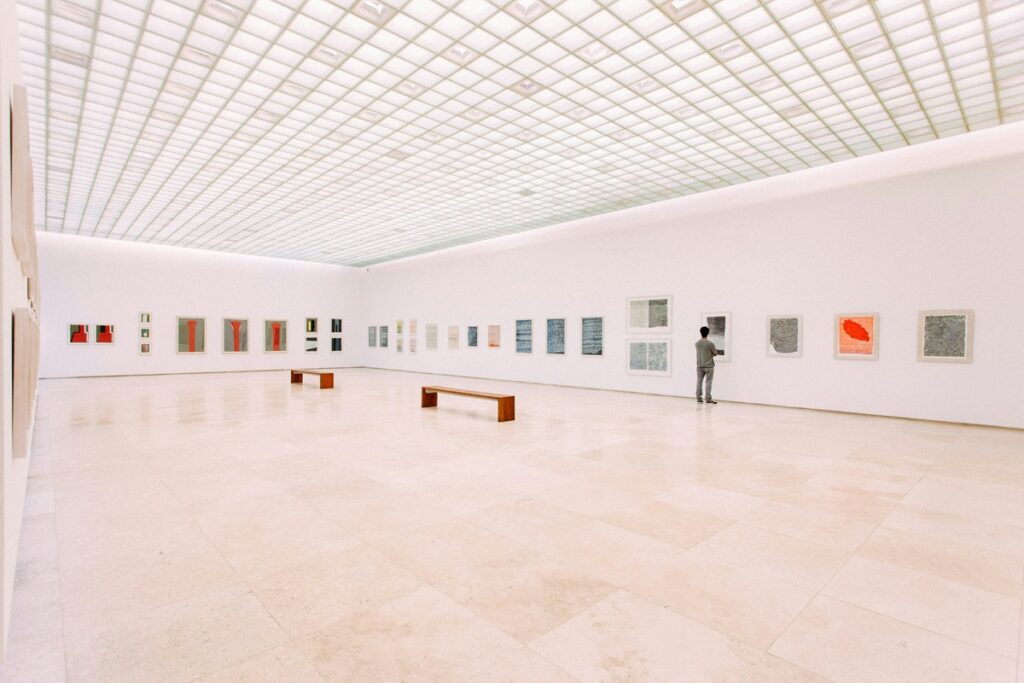Practical tips for finding a job and standing out in the art world
More and more professionals from sectors outside the art world feel a strong pull to enter it. Whether it’s due to a long-standing vocation, the need to reconnect with creativity, or the desire to contribute value from a new perspective, the cultural and artistic sector is increasingly enriched by diverse profiles.
However, those looking to make the leap often face a series of questions: Where to start? How to reframe previous experience? What do cultural institutions actually look for?
In this blog entry, we offer key guidance for transitioning into the cultural sector. We also provide practical advice to increase your chances of finding a job and standing out as a candidate.
Understand the context before taking action
One of the first recommendations for those looking to join the cultural sector is to take time to truly understand it. This ecosystem operates under its own logic: work rhythms, organizational structures, funding models, the relationship between public and private sectors, the role of institutions, technical and creative profiles… All of these shape a very specific professional landscape, often unfamiliar to people coming from more structured or hierarchical sectors.
Before submitting applications, it’s important to read specialized press, follow key media and professionals, attend exhibitions, talks, or conferences, and become familiar with the current challenges facing the sector: financial sustainability, digital transformation, accessibility, audience diversity, among others.
Highlight your previous experience
A common mistake made by those entering the art world is assuming that their previous experience doesn’t matter. Quite the opposite. In fact, many cultural organizations are actively seeking profiles that bring in new skill sets and can help professionalize or complement their structures.
If you come from marketing, communications, project management, finance, education, tech, or law, your background is likely to be highly valuable. The key is to identify your transferable skills and present them strategically.
It’s not just about rephrasing your CV, but about refocusing your professional story. This will clearly show how your skills address real needs within the cultural sector.
While it’s not strictly necessary to have a formal education in cultural management, it can significantly strengthen your positioning. Master’s degrees, postgraduate programs, and specialized courses offer a solid theoretical base, a conceptual framework, and—perhaps most importantly—a network of contacts that will be crucial for your career.
There are also more accessible options like online courses, mentorship programs, workshops, or seminars, which allow you to gain practical knowledge without requiring a major financial investment.
Whatever you choose, the key is to invest in training strategically. Select topics that help you position yourself where you want to be—whether that’s production, management, communications, arts education, or project coordination.
Craft a coherent professional narrative
One of the most important ways to stand out in a job search is by building a solid, coherent, and honest professional narrative. The cultural sector highly values authenticity. You don’t need to invent an artistic career that doesn’t exist. Instead, clearly explain why you’re making a career change, what drives you, and what you can offer.
Recruiters and hiring managers often place high value on critical thinking and a demonstrated commitment to the sector. Your cover letter and interview should reflect this. And your CV—adapted to the language of the sector—should highlight the experiences, skills, and projects. These should be most relevant to the role you’re applying for.
Build and nurture your professional network
As in many creative fields, job opportunities in the art world are often shared informally, rather than listed on major job boards. For that reason, building a genuine professional network is crucial for opening doors.
Take part in cultural life: attend openings, industry events, collaborate on independent projects, or engage on social media. Connect with professionals and institutions in the sector.
It’s also highly recommended to make your professional profile visible. You can do this through an online portfolio, a well-maintained LinkedIn account, or even a personal blog. In the blog, you can share your thoughts on art, culture, or your transition journey.
Personalize every application
Sending the same CV and cover letter to every opportunity is a common mistake. Applying for multiple, unrelated roles within the same organization is another. In the cultural sector—where attention to detail, dedication, and sensitivity are deeply valued—a generic application is likely to be overlooked.
Before applying, thoroughly research the organization, review their recent projects, analyze their communication style, and tailor your message accordingly. Include specific references and clearly explain why you’re interested in working with them. This level of personalization shows professionalism, commitment, and genuine interest.
Conclusion
Transitioning into the cultural and artistic sector is absolutely possible—and often deeply rewarding. It requires preparation, patience, and a well-thought-out strategy. However, it can lead to a career more aligned with your values, creative interests, and desire to make a meaningful impact.
At ARTEPRENEUR, we support professionals throughout this journey and work to build bridges between talent and real opportunities in the art world.
Are you in the midst of this transition? You can schedule a career guidance session with our team.

